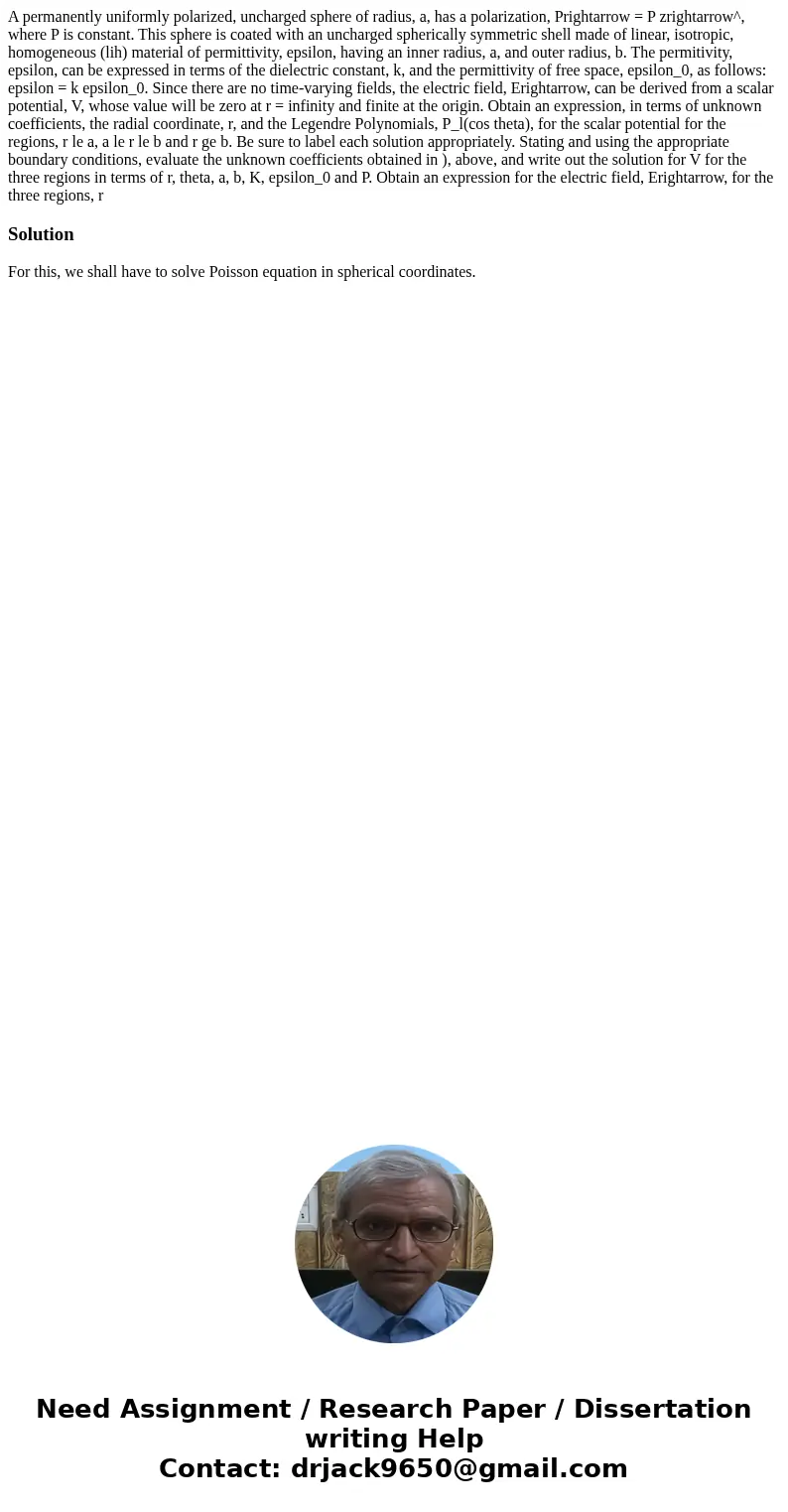A permanently uniformly polarized uncharged sphere of radius
A permanently uniformly polarized, uncharged sphere of radius, a, has a polarization, Prightarrow = P zrightarrow^, where P is constant. This sphere is coated with an uncharged spherically symmetric shell made of linear, isotropic, homogeneous (lih) material of permittivity, epsilon, having an inner radius, a, and outer radius, b. The permitivity, epsilon, can be expressed in terms of the dielectric constant, k, and the permittivity of free space, epsilon_0, as follows: epsilon = k epsilon_0. Since there are no time-varying fields, the electric field, Erightarrow, can be derived from a scalar potential, V, whose value will be zero at r = infinity and finite at the origin. Obtain an expression, in terms of unknown coefficients, the radial coordinate, r, and the Legendre Polynomials, P_l(cos theta), for the scalar potential for the regions, r le a, a le r le b and r ge b. Be sure to label each solution appropriately. Stating and using the appropriate boundary conditions, evaluate the unknown coefficients obtained in ), above, and write out the solution for V for the three regions in terms of r, theta, a, b, K, epsilon_0 and P. Obtain an expression for the electric field, Erightarrow, for the three regions, r 
Solution
For this, we shall have to solve Poisson equation in spherical coordinates.

 Homework Sourse
Homework Sourse